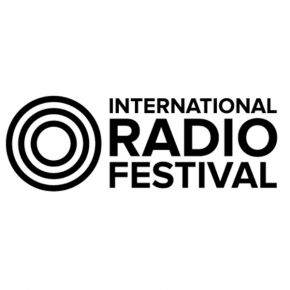AIR continues to grow despite competition from TV, private FM

NEW DELHI: Even as it is World Radio Day on 13 February, there are hopes of resurgence in the growth of All India Radio which till date remains the largest mass communication medium in the country reaching the largest number of people in India and abroad.
World Radio Day is marked as a day to celebrate radio as a medium; to improve international cooperation between broadcasters; and to encourage major networks and community radio alike to promote access to information and freedom of expression over the airwaves.
As radio continues to evolve in the digital age, it remains the medium that reaches the widest audience worldwide. This multi-purpose medium can help people, including youth, to engage in discussions on topics that affect them. It can save lives during natural or human-made disasters; and it provides journalists with a platform to report facts and tell their stories.
The decision to celebrate 13 February was taken since it was on this date in 1946 that the United Nations Radio commenced its services. The idea for this came from UNESCO’s Executive Board which led to wide consultation in June 2011 and culminated in the marking of this day.
The objectives of the day is to raise greater awareness among the public and the media of the importance of radio; to encourage decision makers to establish and provide access to information through radio; as well as to enhance networking and international cooperation among broadcasters.
When one thinks of radio in India, certain images conjure up. One of them is of the farmer worked in his field with a radio set hanging on a nearby tree, while another is of a vendor going on a cycle from place to place with a radio playing the channels and music of his choice. Another endearing image is that of the renowned broadcaster Ameen Sayani whose vibrant voice keeps many people enthralled even today.
Radio broadcast started in India with the setting up of a private radio service in Chennai by the Madras Presidency Club Radio in the year 1924. But when that channel closed down, the British government which was then ruling India gave license in 1927 to the Indian Broadcasting Company to launch Radio stations in Mumbai and Kolkata. But this company failed in 1930. In 1932 the Government of India took over broadcasting. A separate depart¬ment known as Indian Broadcasting Service was opened.
This was renamed All India Radio (AIR) in 1936 and managed by the Department of Communications. After independence, All India Radio was converted into a separate Department and in 1997 it became part of the autonomous Prasar Bharati.
In the year 1957, All India Radio also came to be known as Akashvani was placed under the ambit of the Information and Broadcasting Ministry. During the period of independence, a mere six radio stations existed throughout the country. But during the late 1990s, the network of All India Radio extended to almost 146 AM stations. Moreover the Integrated North-East Service focused on reaching to the population in northeast India. All India Radio offers programmes in English, Hindi and numerous regional and local languages.
Commercial Radio services started in India in 1967 with Vividh Bharati from the headquarters in Mumbai. During the mid-1990s, broadcasting was carried on from 31 AM and FM stations.
Radio was regarded as a vital medium of networking and communication, mainly because of the lack of any other mediums, but even the coming in of television and the growth in literacy making it possible for people to read newspapers did not stop the growth of the audio medium, helped by people’s love for music and stories.
All India Radio has always provided assistance in enhancing the economic condition of the country. Indian radio was particularly designed and programmed to provide support to the procedure of social improvement, which was a vital pre-requisite of economic enhancement.
Till the end of 1976 radio licenses had reached a colossal figure of nearly 17.4 million, earning revenue of Rs 235 million. Later, Radio licences were dispensed with.
AIR's programme pattern combines three main elements: a national channel providing programmes of countrywide interest and significance, a zonal service from each of the four metropo¬litan centers (Delhi, Mumbai, Kolkata, and Chennai); and regional services from individual stations each catering to the needs and interests of its respective area.
The principal ingredients of AIR's programme output are Music, Spoken Word, Dramas, features, News and Current Affairs, Commentaries and Discussion, Vividh Bharati Commercial Service, Farm and Home Broadcasts, Programmes for Special Audiences (like Youth, Women, Children, Industrial Workers and Tribal Population), and Programmes for Overseas Listeners broadcast in the External Services.
By 1994, there were around 85 FM stations and 73 short wave stations that linked the whole nation. The broadcasting technology in India is basically indigenous and reaches far and wide to various listeners like farmers who require various updated information on agriculture. Between 1970 and 1994, the amount of radio receivers increased manifold, almost five times. From the initial 14 million, the number increased to a staggering 65 million. The broadcast services for foreign countries in 32 languages are provided by the External Services Division of All India Radio. Almost 70 hours of news, entertainment programmes were broadcasted in 1994 in various languages with the help of 32 shortwave transmitters.
AIR now broadcasts a total of 239 news bulletins a day, with duration of 32 hours 17 minutes. Of these, 67 are Central bulletins broadcast from Delhi in 19 languages, with a daily dura¬tion of 10 hours 3 minutes; 57 external bulletins (from Delhi) broadcast in 24 languages for a duration of 7 hours 14 minutes and 15 regional bulletins from 34 regional centers (including the Pradeshik desk in Delhi) broadcast in 22 languages and 34 tribal dialects with a total duration of 15 hours every day.
The entry of community radio has added a new element, with a total of 144 stations broadcasting in either educational or rural areas.
Even when FM Radio has taken over with the government opening up the medium to private entrepreneurs and the number of channels expected to rise up to over 800 after Phase III is fully implemented, the charm of All India Radio’s national programmes and Vividh Bharati with its request programmes for the soldiers at the border and other educational and information programmes have not lost their charm.














